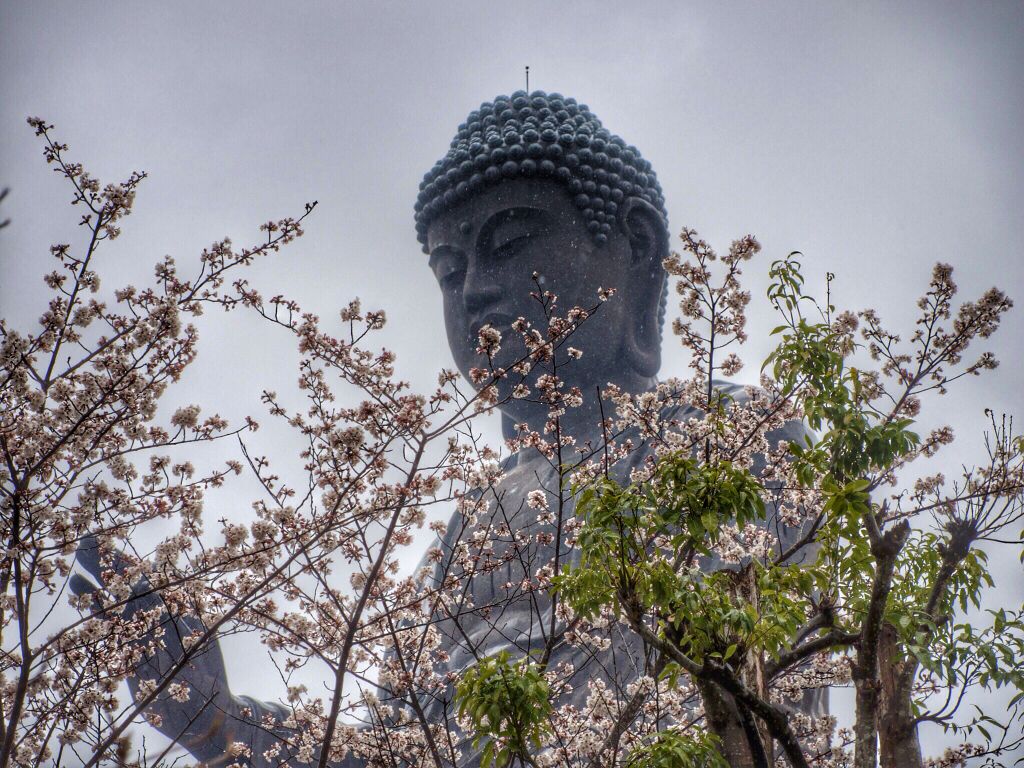The saints are what they are, not because their sanctity makes them
admirable to others, but because the gift of sainthood makes it
possible for them to admire everybody else. — Thomas Merton
Each time we meet another human being and honor their dignity, we help those around us. Their hearts resonate with ours in exactly the same way the strings of an unplucked violin vibrate with the sounds of a violin played nearby. Western psychology has documented the phenomenon of “mood contagion” or limbic resonance. If a person filled with panic or hatred walks into a room, we feel it immediately, and unless we are very mindful, that person’s negative state will begin to overtake our own. When a joyfully expressive person walks into a room, we can feel that state as well. And when we see the goodness of those before us, the dignity in them resonates with our admiration and respect.
This resonance can begin very simply. In India, when people greet one another they put their palms together and bow, saying namaste, “I honor the divine within you.” It is a way of acknowledging your Buddha nature, who you really are. Some believe that the Western handshake evolved to demonstrate friendliness and safety, to show that we are not holding any weapon. But the greeting namaste goes a step further, from “I will not harm you” to “I see that which is holy in you.” It creates the basis for sacred relationship.
When I began my training as a Buddhist monk, I found a taste of this sacred relationship. Around Ajahn Chah was an aura of straightforwardness, graciousness, and trust. It was the opposite of my early family life, and though it initially felt strange and unfamiliar, something in me loved it. Instead of a field of judgment, criticism, and unpredictable violence, here was a community dedicated to treating each person with respect and dignity. It was beautiful.
In the monastery, the walking paths were swept daily, the robes and bowls of the monks were tended with care. Our vows required
us to cherish life in every form. We carefully avoided stepping on ants; we valued birds and insects, snakes and mammals. We learned
to value ourselves and others equally. When conflict arose, we called on practices of patience, and in seeking forgiveness we were guided by councils of elders who demonstrated how to approach our failings with mindful respect.
Whether practiced in a forest monastery or in the West, Buddhist psychology begins by deliberately cultivating respect, starting with ourselves. When we learn to rest in our own goodness, we can see the goodness more clearly in others. As our sense of respect and care is developed, it serves us well under most ordinary circumstances. It becomes invaluable in extremity.
One Buddhist practitioner tells of being part of a group taken hostage in a bank in St. Louis. She describes the initial confusion and fear that spread through the hostages. She remembers trying to quiet her own racing heart. And then she tells how she made a decision not to panic. She used her meditation and her breath to quiet her mind. Over the hours, even as she helped others in her group, she addressed her captors respectfully and expressed a genuine concern for them. She saw their desperation and their underlying needs. When she and the other hostages were later released unharmed, she gratefully believed that the care and respect they showed to their captors had made their release possible.
When we bring respect and honor to those around us, we open a channel to their own goodness. I have seen this truth in working with prisoners and gang members. When they experience someone who respects and values them, it gives them the ability to admire themselves, to accept and acknowledge the good inside. When we see what is holy in another, whether we meet them in our family or our community, at a business meeting or in a therapy session, we transform their hearts.
Some years ago, I heard the story of a high school history teacher who knew this same secret. On one particularly fidgety and distracted afternoon she told her class to stop all their academic work. She let her students rest while she wrote on the blackboard a list of the names of everyone in the class.Then she asked them to copy the list. She instructed them to use the rest of the period to
write beside each name one thing they liked or admired about that student. At the end of class she collected the papers.
Weeks later, on another difficult day just before winter break, the teacher again stopped the class. She handed each student a sheet with his or her name on top. On it she had pasted all twenty-six good things the other students had written about that person. They
smiled and gasped in pleasure that so many beautiful qualities were noticed about them.
Three years later this teacher received a call from the mother of one of her former students. Robert had been a cut-up, but also one of her favorites. His mother sadly passed on the terrible news that Robert had been killed in the Gulf War. The teacher attended the funeral, where many of Robert’s former friends and high school classmates spoke. Just as the service was ending, Robert’s mother approached her. She took out a worn piece of paper, obviously folded and refolded many times, and said, “This was one of the few things in Robert’s pocket when the military retrieved his body.” It was the paper on which the teacher had so carefully pasted the twenty-six things his classmates had admired.
Seeing this, Robert’s teacher’s eyes filled with tears. As she dried her wet cheeks, another former student standing nearby opened her purse, pulled out her own carefully folded page, and confessed that she always kept it with her. A third ex-student said that his page was framed and hanging in his kitchen; another told how the page had become part of her wedding vows. The perception of goodness invited by this teacher had transformed the hearts of her students in ways she might only have dreamed about.
We can each remember a moment when someone saw this goodness in us and blessed us. On retreat, a middle-aged woman remembers the one person, a nun, who was kind to her when, as a frightened and lonely teenager, she gave birth out of wedlock. She’s carried her name all these years. A young man I worked with in juvenile hall remembers the old gardener next door who loved and valued him. The gardener’s respect stuck with him through all his troubles. This possibility is voiced by the Nobel laureate Nelson Mandela: “It never hurts to think too highly of a person; often they become ennobled and act better because of it.”
To see with sacred perception does not mean we ignore the need for development and change in an individual. Sacred perception is one half of a paradox. Zen master Shunryu Suzuki remarked to a disciple, “You are perfect just the way you are.And . . . there is still room for improvement!” Buddhist psychology offers meditations, cognitive strategies, ethical trainings, a powerful set of practices that foster inner transformation. But it starts with a most radical vision, one that transforms everyone it touches: a recognition of the innate nobility and the freedom of heart that are available wherever we are.






